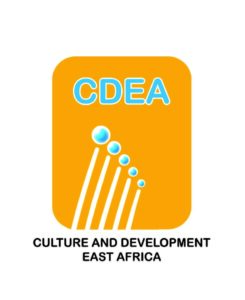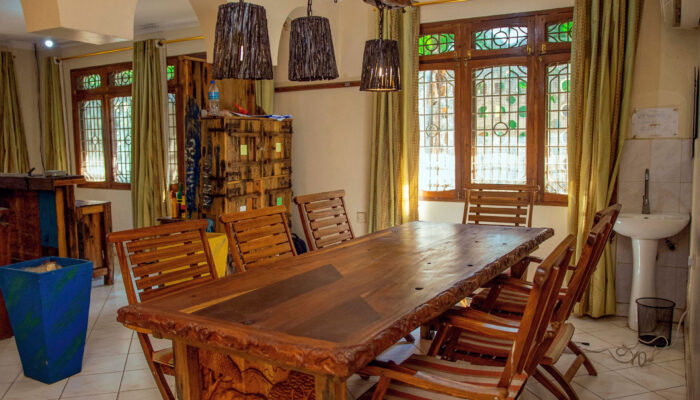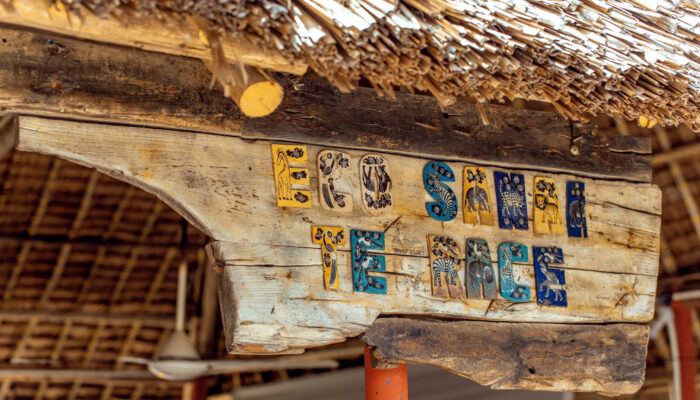I. Introduction
This document sets out the requirements for the evaluation mandate for the TAN-21/0009, Artistic Rights Project in Tanzania. The terms of reference define the purpose, context, objectives (including indicative evaluation questions), scope, and proposed methodology for the evaluation. They also describe the evaluation process and expected outcomes. The terms of reference will form an integral part of the evaluation contract.
II. General information and background to the evaluation
Norwegian development assistance in the cultural sector aims to contribute to increased awareness and knowledge of cultural rights as human rights, the importance of cultural rights and free artistic expressions for democracy and the rule of law, and that these rights must be actively protected and promoted. Freedom of artistic expression is crucial to enabling people to freely express their identity, values and ideas. The arts and culture sector is an important arena for critical thinking and driver of change. Artists and other cultural practitioners are often to be found on the barricades fighting against injustice and oppression. Greater knowledge and awareness is needed from governments, human rights organizations, and the media of the importance of artistic freedom and cultural rights for promoting sustainable development and respect for human rights. Further, artists and cultural organizations need to be more aware of the importance of freedom of artistic expression and cultural rights.
The Norwegian Ministry of Foreign Affairs (MFA), represented by the Royal Norwegian Embassy (RNE) in Dar es Salaam awarded Culture and Development East Africa (CDEA), non-governmental organization duly established in the United Republic of Tanzania under registration number NGO/R1/498 with a grant to be used exclusively for the implementation of the Artistic Rights Project to be implemented during the period from 07/12/2022 to 31/12/2025 .
The expected results of the Project are as follows:
- Outcome 1: Enhanced policy knowledge for artists and policymakers
- Outcome 2: CDEA’s organizational capacity enhanced to implement the Artistic rights project
- Outcome 3: Improved knowledge for artists and the legal community on the need for harmonized legal framework for the Tanzania art sector
III. Purpose, scope, and focus of the evaluation
3.1 Purpose
CDEA with support from the RNE wishes to conduct a comprehensive end of project evaluation for the TAN-21/0009, Artistic Rights Project in Tanzania, assessing its achievements, impact, and lessons learned while providing learnings and strategic recommendations for the design and implementation of a subsequent project phase.
3.2. Scope
This evaluation encompasses the entire project which is guided by a results framework for December 202- December 2025. The evaluation’s scope and analytical depth will be guided by specific evaluation questions outlined in the subsequent chapter.
Below are the impact and outcome indicators for the Artistic Rights project.
| Level of change | Impact/Outcome Indicators |
| Impact: Enhanced policy and legislative framework for Tanzania art sector | -Revised National Cultural Policy of Tanzania, 1996 -An Amended National Arts Act 1984 |
| Outcome 1: Enhanced policy knowledge for artists and policymakers | -Increased knowledge by artists and policy makers on what needs to be done to improve the status of the artist in Tanzania |
| Outcome 2: CDEA’s organizational capacity enhanced to implement the Artistic rights project | -Number of staff trained in gender-sensitive project management and advocacy skills-Number of organizational decisions or activities aligned to the new gender policy-Increase in strategic partnerships and collaborations formed with other organizations due to improved networking and visibility,% increase in media mentions or social media engagements highlighting CDEA’s work |
| Outcome 3: Improved knowledge for artists and the legal community on the need for harmonized legal framework for the Tanzania art sector | -Number of stakeholders (artists and legal professionals) who participate in awareness-raising sessions or dialogue forums on harmonizing the legal framework ;-% of participants to demonstrate increased understanding of the culture sector’s legal framework based on feedback or post-event sessions-Number of advocacy initiatives or proposals developed by participants to address the gaps in the legal framework |
3.3. Focus
The assessment will focus primarily on implementing partner CDEA activities and cover the programme period from 07/12/2022 to 31/12/2025. The evaluation will examine all project components, activities, partnerships, and outcomes within Tanzania
Evaluation Questions
The evaluation team is requested but not limited to answering the following questions:
| Relevance | · What steps have been undertaken by artists and policymakers due to increased policy awareness aimed at enhancing the status of artists in Tanzania?· What developments have been taken place with regards to harmonizing the legal framework for the Tanzania art sector· Are the policy recommendations appropriate and feasible to addressing the challenges of artistic freedom, access to finance, training needs, social welfare needs and labour conditions for artists?· How does the programme contribute to the overall objectives of the MFA and RNE? |
| Coherence | · To what extent is the intervention coordinated with other interventions in the areas of freedom of artistic expression and cultural rights in Tanzania?· To what extent do the intervention’s objectives respond to the RNE’s action plan for artistic freedom of expression, Norway’s Strategy for Freedom of Expression (2021) and other relevant Norwegian policies and action plans?· To what extent does the intervention complement those of other donors involved in the cultural sector? What synergies are possible?· How have the cross-cutting issues ( women’s rights and gender equality, impact on climate/environment, anti-corruption) been considered in the programme? What difficulties have been encountered and what are the prospects for improvement? |
| Effectiveness | · What effects have been achieved in terms of CDEA’s organizational development capacity in implementing the artistic rights programme· What support, follow-up, and monitoring mechanisms did the CDEA and its partner (Tanzania Artistic Rights Organization -TARO) put in place for the project?· What are the main factors that seem to have contributed to achieving the intended objectives?· What is the added value of the Artistic Rights project at to the art scene in Tanzania?· Are the implementation approaches and methodologies effective? Is there a positive/negative connection between these approaches and the projects results?· How many artists, organizations, or policymakers have directly benefited from the project?· What evidence shows improved awareness or policy engagement as a result of project activities? |
| Efficiency | · Was the collaboration between CDEA and TARO effective?· How well did TARO understand its mandate within the project? Were problems identified in a timely manner and were practical and feasible solutions proposed?· What difficulties were encountered in implementing based on a results-based approach?· Was the Artistic Rights Project implemented in the most efficient way compared to other possible approaches?· Have the available resources (human, material, and financial) been managed rationally to achieve the results during the period under review?· How cost-effective were the chosen approaches (trainings, policy dialogues, advocacy campaigns)?· Were there delays or inefficiencies, and how were they mitigated?· How did CDEA leverage partnerships or in-kind support to maximize results? |
| Impact | · In what ways has the project influenced national and international discussions or policy actions related to artistic freedom and status of the artists?· Are there examples of artists or government institutions that have applied knowledge from the project?· Does the intervention have the right strategy towards influencing revision of the 1997 Tanzania Culture Policy?· Does the intervention have the right strategy towards influencing the amendment National Arts Act 1984? |
| Sustainability | · To what extent will the partnership between CDEA and TARO continue to function after the programme ends?· Did the key stakeholders (policy makers, legislators, legal bodies) demonstrate effective commitment to implement the project recommendations?· To what extent have (or will) the positive results of the Artistic Rights project endure after the program ends?· What external factors (policy and legislative changes, market conditions, artistic needs) should inform future planning?· Are the objectives of the Artistic Right project still valid and well-founded? |
IV. Evaluation processes and methods
4.1 Methodology
The evaluation will use a mixed methods design to gain a more comprehensive understanding by combining numerical data (quantitative) with descriptive data like words and observations (qualitative). It is intended that this evaluation adopts a participatory mixed-method approach, combining internal self-assessment by project partners (CDEA and TARO) with an independent external evaluation. This will yield comprehensive insights from multiple perspectives for the development of future phases.
Self-Evaluation Component: With guidance from the Consultant, partners will engage in structured self-assessments utilizing standardized frameworks and tools. This internal evaluation aims to capture institutional learning, identify challenges from the implementers’ viewpoint, and document achievements along with lessons learned. The partners will evaluate their performance against established indicators, reflect on program processes, and provide insights on contextual factors influencing implementation.
External Evaluation Component: The consultant will perform an objective assessment based on established evaluation criteria such as relevance, coherence, effectiveness, efficiency, impact, and sustainability. The external review will offer impartial analysis, validate findings reported by the partners, identify any gaps or blind spots, and present comparative perspectives drawn from broader sector experience.
This methodology promotes a thorough understanding while encouraging partner ownership of the findings through systematic triangulation of both evaluation streams conducted by the consultant. The consultant will compare and synthesize outcomes from self-assessments and external evaluations to establish a solid analytical foundation. Any discrepancies between internal and external evaluations will be thoroughly examined through targeted additional inquiries.
4.2 Roles and responsibilities of the evaluator(s)
The recruited team will consist of one or two experts. It will be responsible for evaluation, coordination, and logistics, and will report to the Executive Director, CDEA. The RNE will also review the evaluation report.
This recruited team will prepare the technical and financial proposal and will have final responsibility for the evaluation.
4.3 Evaluation process and Estimative schedule
| Phase | Responsibilities | Deliverable | Timeline | Payment terms |
| Call for Proposals | · Invitation to apply· Respond to clarification requests from potential bidders | Call for proposals launched | 5.11.2025 – 10.11.2025(5 working days) | N/A |
| Proposal Evaluation | · Technical and financial evaluation of submitted proposals | Proposals submitted and evaluated | 11.11.2025 – 14.11.2025( 4 working days) | N/A |
| Awarding of the mandate | · Notification of successful and unsuccessful bidders· Contract terms and conditions negotiation· Contract signing· Kick-off meeting | Signed contract | 17.11.2025 – 21.11.2025(5 working days) | N/A |
| Evaluation Design and Preparation | · Develop detailed evaluation framework and methodology· Design self-evaluation tools and templates for partners· Create data collection instruments (interview guides, surveys, observation protocols)· Establish evaluation timeline and quality assurance procedures | Inception Report | 24.11.2025 – 28.11.2025(5 working days) | 20% after submission and approval of deliverable |
| Data Collection and Self-Evaluation | · Conduct stakeholder interviews and focus group discussions· Review and analyze program documentation and performance data· Assess program logic and theory of change validity· Provide technical support to partners during self-evaluation | Self-evaluation reports from partners; Data collection summary from consultant | 01.12.2025 – 12.12.2025(10 working days) | 40% after submission and approval of deliverable |
| Analysis and Synthesis | · Analyze and triangulate findings from multiple data sources· Compare and validate partner self-evaluation results· Identify discrepancies and conduct follow-up inquiry as needed· Synthesize integrated findings and develop preliminary recommendations | Draft evaluation report and corresponding Power Point Presentation | 15.12.2025 – , 19.12.2025(5 working days) | 40% after submission and approval of deliverable |
| Validation and Reporting | · Facilitate findings validation workshop with all partners· Incorporate feedback and finalize evaluation report· Present final recommendations for next phase development | Final Evaluation Report and corresponding Power Point Presentation | 22.12.2025 – 31.12.2025(5 working days) | 20% after submission and approval of deliverable |
4.4 Reference documents
After signing the contract, CDEA will share the following documents with the evaluation team to enable it to conduct an initial document review:
- RNE Call for proposals on strengthening cultural rights
- CDEA proposal
- Contract -TAN-21/0009, ARTISTIC RIGHTS, including annexes
- Results framework
- Interim and annual reports
- Audit reports
4.5 Success Factors for New Phase Development
The evaluation should specifically address:
- Sustainability frameworks and diversified funding approaches tailored to Tanzania’s unique cultural environment, ensuring that local capacity development is in harmony with international funding trends and best practices.
- Scalability potential and replication opportunities
- Digital transformation and technology integration needs
- Focus on both moral and economic rights of artists as part of promoting human rights and fundamental freedoms
- Partnerships expansion and deepening strategies (e.g. coalition building, professional and legal partnerships)
- Innovation opportunities and emerging trends alignment especially Norway’s Strategy for Freedom of Expression (2021) and other relevant Norwegian policies and action plans
V. Required profile
Musts
- Relevant experience: Demonstrable experience in evaluating projects, ideally in similar sectors or contexts with a minimum of 7 years and at least 3 evaluations of comparable scope and complexity.
- Attention to detail: A meticulous approach to reviewing information and ensuring accuracy.
- Ethical judgment: Maintaining a strong ethical approach and ensuring data privacy and confidentiality.
- Cultural sensitivity: Understanding and respecting the cultural, social, and political context of the project and its stakeholders.
- Strong analytical and critical thinking abilities, proficiency in data collection and analysis (both qualitative and quantitative) including a
- Excellent synthesis and writing skills.
- Proficiency in English and Kiswahili (report written in English).
Added advantage
- Very good knowledge of the realities, strengths, and challenges of the cultural sectors in Tanzania.
- Experience in evaluating projects in the human rights and fundamental freedoms field
VI. Content of the technical and financial offer
6.1 Applications must include the following:
- A cover letter
- A reference list of previous assignments
- A methodological note (or technical offer) on the scope of what is expected under this mandate
- A work plan
- A financial Offer
- A detailed CV of the proposed expert(s)
6.2. Suitability and award criteria
The tender procedure for this evaluation is based on an invitation (at least 3 companies/persons).
An important suitability criterion is that the evaluator(s) should be independent of SDC and not be involved in the activities covered by this evaluation.
| Suitability criteria | Verification |
| Experience: Consultants have sufficient experience to respond to the mandate | At least two (3) solid references for comparable projects over the past five (5) years. |
| Language: The consultant can communicate orally and in writing in English or French. Fluency in both languages is an asset | Lead consultant’s proven language skills |
| Conflict of interest: The consultant/consulting team declares that it is free from any conflict of interest | Written Confirmation |
| Award criteria | Weighting | Verification |
| Candidate experience | 30 | CV, references |
| Knowledge and understanding of the context | 25 | CV |
| Quality and clarity of the work methodology proposed in the technical bid | 25 | Scoping note |
| Financial offer | 20 | Completed form |
6.3 Application procedure
Technical and financial proposals must be submitted by email to Cdea.Tanzania@yahoo.com, copied to Secretariat@cdea.or.tz with the subject line Submission of candidature for conducting the final evaluation of the Artistic Rights project in Tanzania.
The deadline is 10.11.2025 at 5PM (East African Time).
The technical proposal should not exceed 5 pages (financial offer and CV excluded) and should present the service provider:
- Letter of motivation
- Understanding of the mission, its scope and content
- Mission approach and methodology
- Familiarity with the arts and culture sector and similar assignments
- Financial proposal (indicate a daily rate in TZS)
- Appendix: detailed CVs


































